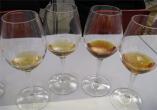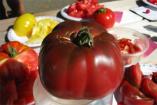Which brought to mind the opening chapter of Singer and Mason‘s book, The Way We Eat, and its discussion about the different breeding aims for different kinds of poultry. Battery hens are bred to live long enough to produce eggs at top capacity, while broilers are raised to be hungry – so they gain weight rapidly enough to be slaughtered at 6 weeks. Which basically means surplus battery hens are not the right shape for today’s chicken dinners, which is how they end up in landfills.
Although chickens have a lifespan of 5 years, those manipulated into high-yield egg laying last a little more than a year; there is an industry practice of forced moulting which causes them to lay a bit longer; this involves starving them for between 5-14 days, and depriving them of water for part of this time. When they are finished as layers, they are killed, not always humanely. Let us just say that the Coen Brothers were not the only ones to find a novel and revolting use for a chipper.
And there are other living by-products to dispose of. Battery hens lay eggs, some of which are intended for hatcheries to produce more battery hens. But male chicks are an unwanted by-product, much like the male calves from dairy cows. In the example cited by Singer and Mason, male chicks are dropped (sometimes live) into the garbage; a UK website on factory farming says male chicks are killed and their bodies used for animal feed or fertilizer.
Some clarification over egg types, by the way. Unless otherwise labelled, the cheap white eggs in every supermarket are from battery hens, living in unspeakable conditions in cages too crowded to allow them to stretch their wings. Free run eggs are from hens that are not caged, but may be living in overcrowded conditions in barns; free range eggs are from barn-reared chickens with access to the outdoors (which they may elect not to use); organic eggs are from hens fed on organic feed; and if the words ‘pasture-reared’ appear anywhere it means the hens were raised outdoors.
Chicken issues are very topical, at least in the UK. Last year celebrity chef and sustainable food advocate Hugh Fearnley-Whittingstall and others embarked on a public information campaign about factory farming of chicken. And Felicity Lawrence‘s Not on the Label spilled the beans on EC regulations which allow the injection of chicken with hydrolized animal proteins so that they will better retain the water this meat is injected with, boosting its weight and retail value while giving it that characteristic industrial texture of soggy cardboard.
After reading a bit more about de-beaking, which, depending on the method used, can be the equivalent of having your nose sliced off by a hot razor, and is done to prevent aggression and cannibalism (caused in turn by overcrowded conditions) among battery hens, I browsed the website of United Poultry Concerns, which aims to raise awareness about battery hens and industrial poultry rearing. And because I do love a chicken dinner, as long as I know where my chicken came from, I thought with some gratitude about having Farmer Dan within reach, to sell me pasture-raised organic chook.
In brighter news, I’d heard that Oak Bay, notorious for restrictive bylaws, had relaxed its rules on keeping backyard chickens. Not sure if this is the change I’d heard about, but the poultry section of the animal control bylaw there was amended last August to allow up to 5 birds to be kept, as long as your lot is large enough.
And if you’ve read this far, you deserve to read Steven Dobyns’ excellent poem, Spiritual Chickens. Brraaaawk!










4 Responses to Counting chickens